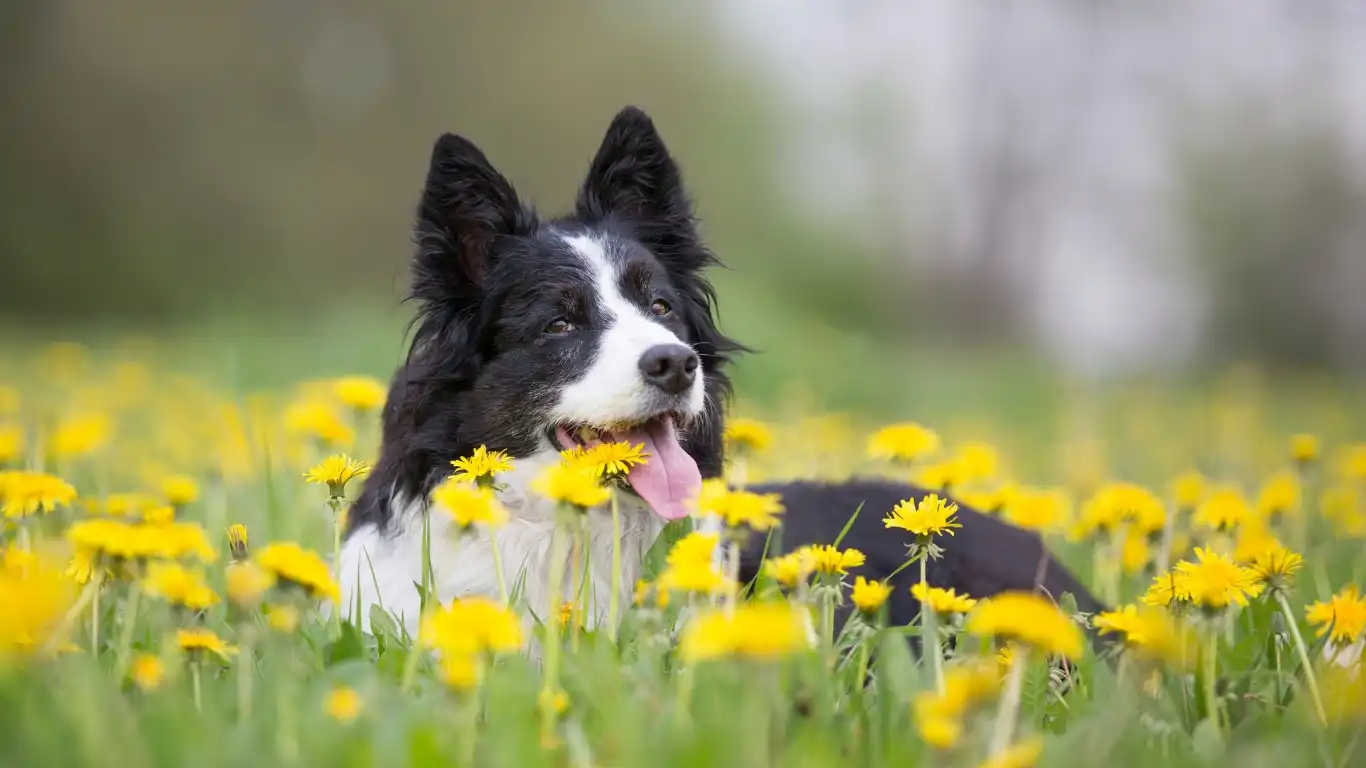How to Spot Signs of Stress in Dogs and Keep Them Calm and Happy
Dogs are amazing companions, but just like us, they can get stressed out from time to time. Knowing how to spot signs of stress in dogs is super important—not just so you can help them feel better, but also to prevent those little stress signals from turning into bigger health or behavior problems. From my years working as a Veterinary Technician specializing in nutrition, I’ve seen how subtle changes in a dog’s behavior or body language can say a lot about what’s going on beneath the surface. It’s not always about the obvious stuff like barking or growling. Sometimes the signs are quieter but just as telling.
Why Stress in Dogs Matters More Than You Think

Stress in dogs isn’t just a passing mood—it affects their entire well-being. Chronic stress can weaken their immune system, upset digestion, and even cause behavioral changes that can make life difficult for both the dog and the owner. When I was working closely with dogs dealing with food sensitivities, I noticed that stress often played a hidden role in their symptoms. Stress can suppress appetite, cause digestive upset, or even lead to a reluctance to eat, which complicates nutritional management.
Understanding stress signals early helps prevent these issues and makes sure your furry friend stays happy and healthy.
How to Spot Signs of Stress in Dogs: Key Behavioral Indicators

1. Changes in Body Language
Dogs communicate a lot through body language, and stress often shows up there first. You might see your dog:
- Avoiding eye contact or looking away suddenly
- Yawning frequently, even when they’re not tired
- Licking their lips repeatedly without food nearby
- Cowering, tail tucked, or ears pinned back
- Pacing or restless movements
These are subtle signs, but once you know what to look for, they become easier to recognize. I always encourage dog parents to spend some quiet time watching their dogs’ natural behavior before jumping to conclusions.
2. Vocalizations and Sounds
Not all barking is the same. Dogs might whine, growl softly, or even howl when they’re stressed out. From my experience, some dogs will start making unusual noises when feeling overwhelmed—like low whines that you might not notice at first. It’s different from their usual bark or playful sounds and usually accompanied by other signs like pacing or hiding.
3. Changes in Eating or Drinking Habits
Dogs under stress might lose interest in their food or drink more water than usual. When I worked with dogs recovering from surgery or illness, monitoring their food intake was a critical way to catch early signs of stress or discomfort. Skipping meals, gulping down food too quickly, or being picky are all signs to watch out for.
Physiological Signs of Stress in Dogs You Should Know

1. Panting and Drooling
Dogs naturally pant to cool down, but excessive panting without obvious heat or exercise is often a stress signal. Along with panting, some dogs drool more when anxious or upset. I’ve seen dogs come into the clinic panting heavily just from the stress of being in an unfamiliar place.
2. Shaking or Trembling
While shivering can mean your dog is cold, trembling or shaking can also be a sign of anxiety or stress. It’s common in dogs that are scared or overwhelmed by new environments or loud noises.
3. Dilated Pupils and Increased Heart Rate
Though you might need a vet’s help to check these, dilated pupils and a fast heartbeat are classic signs of stress. When I’ve done wellness checks, a dog’s eyes and pulse can tell me a lot about their current state beyond what their behavior reveals.
Common Triggers That Cause Stress in Dogs

From my experience in the vet world, it’s clear that every dog is unique, but some stress triggers are pretty common across the board. Recognizing what sets off your dog’s stress helps you prevent it or at least be prepared when it happens.
1. Changes in Environment or Routine
Dogs are creatures of habit. When their daily routine gets shaken up—whether it’s moving to a new home, rearranging furniture, or even just a different walking route—it can stress them out. I’ve noticed this especially in older dogs or those with anxiety tendencies. They might become withdrawn or show more of those subtle stress signals we talked about earlier.
2. Loud Noises and Sudden Movements
Thunderstorms, fireworks, or construction noises are notorious stress culprits. Some dogs literally freeze or try to hide. I remember one dog I worked with who would tremble uncontrollably every time fireworks went off nearby, despite being inside and seemingly safe. It’s heartbreaking but shows how deeply sound affects them.
3. Interaction with Other Animals or Strangers
Not all dogs are social butterflies. Encounters with unfamiliar dogs or people can trigger stress, especially if they haven’t been properly socialized. When working with shelter dogs, I’ve seen how anxiety around new faces can cause excessive barking, pacing, or even defensive aggression. Recognizing this early means you can manage their introductions better.
How Stress Affects Your Dog’s Health and Behavior

It’s easy to brush off stress as just a mood thing, but it really impacts your dog’s health. Prolonged stress can mess with their immune system, making them more vulnerable to infections. During my time helping dogs recover from illnesses, I saw that stressed dogs often took longer to heal.
Behavior-wise, stress can lead to:
- Excessive barking or whining
- Destructive chewing or digging
- Sudden aggression or fearfulness
- Withdrawal or hiding
These behaviors aren’t your dog “being bad”—they’re coping mechanisms. From my vet nursing days, I learned the hard way that punishing these behaviors only makes things worse. Instead, the goal is to understand what’s causing the stress and gently help your dog work through it.
Stress and Nutrition: A Closer Look
One of the lesser-known ways stress can hit dogs is through their nutrition. Stress can affect appetite, digestion, and nutrient absorption. I’ve worked with many dogs whose digestive issues were tied back to stress, not just diet alone.
When dogs get stressed, they may:
- Eat less or skip meals
- Eat too fast, which can cause choking or digestive upset
- Develop gastrointestinal issues like diarrhea or vomiting
Because of this, I always stress (pun intended!) the importance of monitoring food intake and digestion when a dog is going through a tough time. If you notice these patterns, it’s a good idea to check with your vet or a nutrition specialist.
Simple Ways to Help Reduce Your Dog’s Stress

1. Create a Safe, Calm Space
Think of it like a cozy little retreat just for your dog—a quiet corner with their bed, favorite toys, and maybe some calming scents like lavender. When I’ve recommended this to pet parents, they often see their dogs retreat to that space when feeling overwhelmed, which is a good sign.
2. Consistent Routine
Sticking to regular feeding, walking, and playtimes can do wonders. Dogs thrive on predictability, and this helps them feel secure. Even if life gets hectic, try to keep key parts of your dog’s day consistent.
3. Gentle Exercise and Mental Stimulation
Exercise isn’t just about burning energy; it also helps reduce stress hormones. I always suggest walks combined with some mental games—like puzzle feeders or simple training sessions—to keep their minds engaged and happy.
4. Positive Reinforcement and Patience
When your dog shows signs of stress, respond calmly and with kindness. Reward relaxed behavior with treats or affection, and avoid scolding. I’ve found that this approach builds trust and helps dogs feel safer over time.
When to Seek Professional Help for Your Dog’s Stress

While many stress signs can be managed at home, there are times when a professional’s input is crucial. From my years as a Veterinary Technician, I can tell you that if your dog’s stress seems to be escalating or lasting longer than usual, it’s smart to get expert advice. Stress that’s left unchecked can lead to chronic anxiety, behavioral issues, or even physical illness.
Signs It’s Time to Call the Vet or a Behavior Specialist
- Persistent changes in appetite or weight – If your dog consistently refuses food or loses/gains weight rapidly, it could signal a deeper problem.
- Severe behavioral changes – Aggression, extreme withdrawal, or repetitive behaviors like licking or chewing can indicate serious anxiety or neurological issues.
- Physical symptoms that don’t improve – Vomiting, diarrhea, excessive panting, or shaking that lasts for days should always be checked out.
- Stress triggers you can’t control – If environmental factors like noise or other pets are unavoidable and your dog is suffering, a specialist can help develop coping strategies.
Veterinarians can rule out medical causes and suggest treatments, while certified dog behaviorists or trainers offer tailored plans for anxiety management. I’ve collaborated with both professionals many times, and often, a team approach brings the best results.
Helpful Tools and Products to Ease Dog Stress

Thanks to advances in pet care, there are now many tools designed to help stressed dogs relax. I’ve seen how some of these can be real game-changers when combined with good management and care.
Calming Aids I Recommend Based on Experience
- Pressure wraps and vests: Products like the ThunderShirt apply gentle, constant pressure that can soothe anxious dogs. I’ve had clients tell me their dogs visibly calm down within minutes of putting one on.
- Calming pheromone diffusers: These mimic natural comforting scents and can reduce anxiety in the home. They’re especially useful in shelter environments where stress runs high.
- Natural supplements: Supplements containing ingredients like chamomile, valerian root, or CBD (where legal and vet-approved) have helped some dogs relax. Always talk to your vet before starting supplements.
- Interactive toys and puzzle feeders: Keeping a stressed dog mentally engaged can distract and calm them, reducing nervous energy.
Remember, these aids work best as part of an overall plan, including routine, environment management, and positive interaction.
Practical Tips From My Experience to Support Your Dog Daily
Over the years, I’ve learned that the little things add up when it comes to helping dogs manage stress. Here are some everyday habits that can make a big difference:
Observe and Listen
Pay close attention to your dog’s body language and behavior changes. Even small shifts can be clues to how they’re feeling. Journaling what you notice over days or weeks helps you identify patterns or triggers you might otherwise miss.
Stay Calm Yourself
Dogs are masters at picking up on our emotions. If you stay relaxed and positive during stressful moments, it helps your dog mirror that calm. I always remind pet owners that their energy impacts their dog’s stress levels more than they might realize.
Keep Training Positive and Consistent
Short, frequent training sessions not only teach obedience but build confidence and trust. Using treats and praise reinforces good behavior and helps your dog feel safe and valued.
Make Vet Visits Less Stressful
Regular vet visits can be stressful, but preparing your dog can ease this. Bring familiar toys, offer treats during exams, and consider short practice visits just to get your dog used to the environment. From experience, dogs that feel safe at the vet tend to handle stress better overall.
References
Disclaimer
This article is intended for informational purposes only and should not replace professional veterinary advice. If your dog is experiencing stress or health issues, please consult your veterinarian or a certified animal behaviorist for personalized care and treatment.





